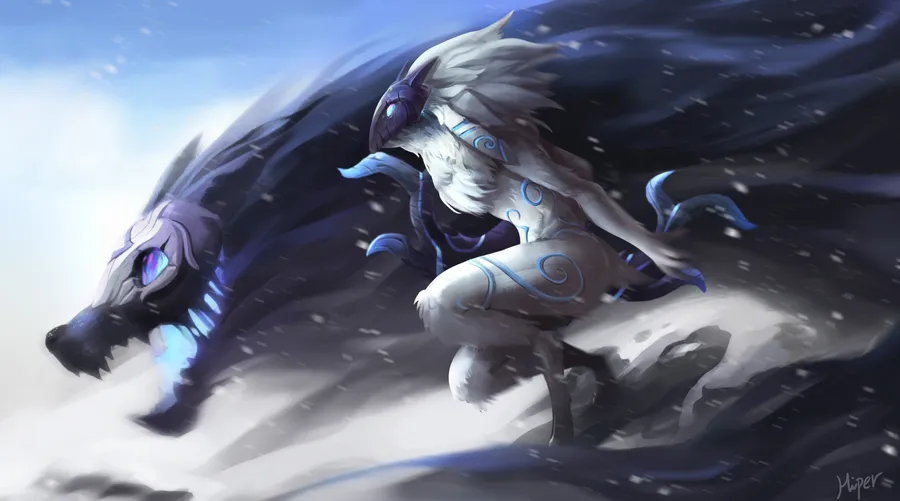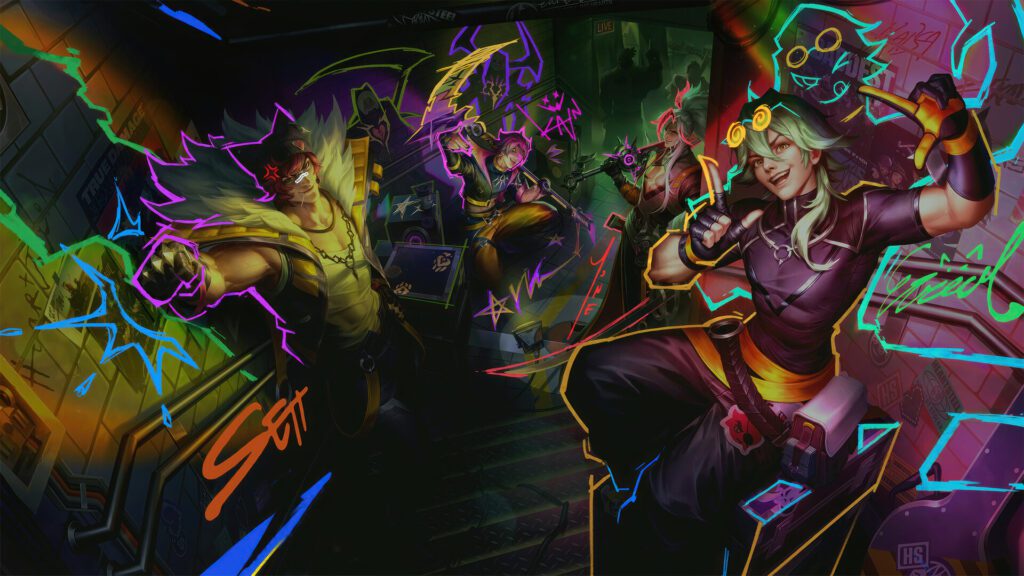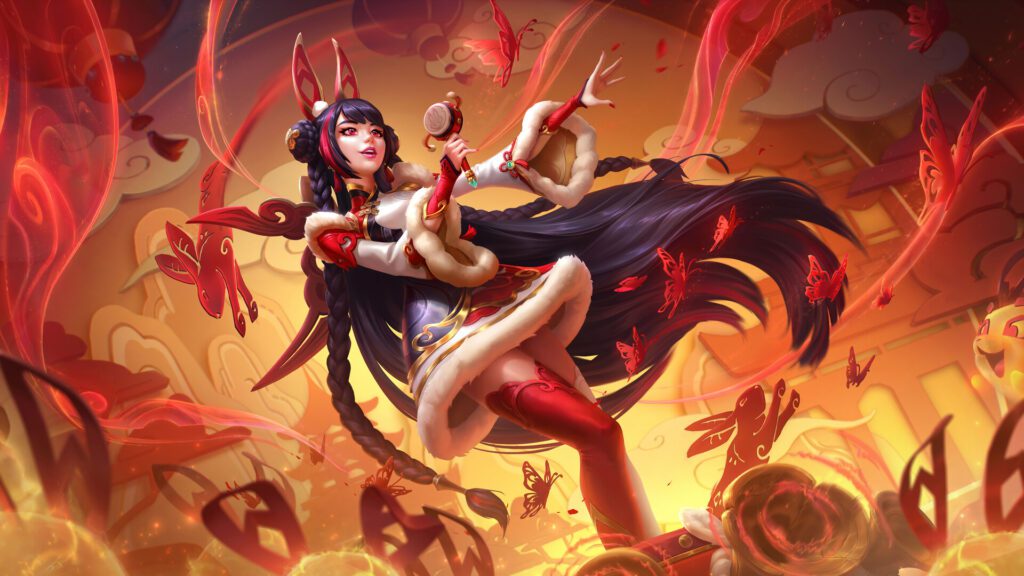League of Legends, a dynamic and evolving online multiplayer game, boasts a vast roster of champions, each with unique abilities and lore that enrich the gaming experience. Over the years, Riot Games has meticulously crafted these champions, releasing them periodically to keep the gameplay fresh and exciting. The chronological order of these releases tells us much about the evolving strategy and thematic storytelling employed by Riot. In this article, we delve into the world of LOL champions by release date, providing insights and detailed analysis of their impact and development over time.
The Initial Years: Foundation of the LOL Universe
When League of Legends was first launched in October 2009, it introduced players to a roster of 40 champions. These initial characters laid the foundation for the complex strategies and gameplay that would follow. Early champions like Annie, Garen, and Ashe became iconic figures, familiar faces to any seasoned summoner. Their abilities were simpler yet critical in defining team roles that have become hallmarks of the game.
As new champions were introduced, Riot Games began to explore diverse characters with unique gameplay mechanics. Champions released in subsequent years not only offered players new tactical options but also enriched the LOL universe with deeper lore and backstories. For instance, the champion Swain, released in 2010, added a new dimension to the Demacian-Noxian conflict within the game’s narrative.
2011-2012: Evolution and Complexity
During the 2011-2012 period, Riot Games significantly ramped up the complexity and diversity of its champions. The roster expanded with interesting new entries like Riven, Vayne, and Lee Sin—all of whom quickly gained popularity within the community. These champions introduced skill-intensive mechanics that appealed to players looking for more challenging gameplay.
Moreover, these years marked a shift in creative direction, with champions designed to challenge both casual and competitive players. These releases cemented the long-term strategy of continuously balancing and updating champions to ensure competitive viability, a practice that remains integral to Riot’s champion release philosophy today.
2013-2015: The Rise of Unique Playstyles
LOL champions by release date in the years 2013-2015 signified Riot’s commitment to creating distinctive playstyles and roles. Champions like Yasuo, Jinx, and Thresh gained widespread popularity among players. Yasuo, with his parry mechanics and high mobility, encapsulated the trend of developing high-risk, high-reward champions. This era also saw the introduction of champions with unusual skill sets, such as Bard, whose roaming playstyle offered a fresh angle on traditional support roles.
Innovations in design reflected in champions’ release during this period emphasized player agency and creative strategies, fostering a dynamic environment in the rift. Players were encouraged to experiment with new synergies and tactics, cultivating a meta that was more diverse and unpredictable.
2016-2018: Storytelling Through Champions
By the time we reach 2016-2018 in the timeline of LOL champions by release date, Riot Games had started integrating rich storytelling elements into their champions more thoroughly. Every champion release came with elaborate narratives and interactions with other characters, enhancing the overall lore of Runeterra.
For example, Camille’s release in 2016 not only introduced a new level of complexity through her gameplay but also augmented the Piltover and Zaun storyline within the League of Legends universe. Riot Games began tying champion releases into broader events and story arcs, creating a more cohesive and immersive experience for players. This period also saw the release of champions with diverse cultural and mythological inspiration, such as the celestial entity Aurelion Sol, broadening the game’s cultural appeal.
Recent Developments: Innovation and Diversity
In recent years, Riot Games has focused on enhancing the LOL champions by release date with attention to inclusivity and innovation. Champions like Aphelios and Sett, released in 2019 and 2020 respectively, showcase Riot’s continued effort to evolve gameplay mechanics and narrative diversity.
Aphelios, with his moon-centric weapon system, is a testament to Riot’s willingness to push the boundaries of traditional champion design, providing players with layers of complexity to master. Meanwhile, Sett’s hybrid nature as both a fighter and a leader with his Ionian roots adds nuanced exploration of character identities within the game.
The ongoing development of champions also reflects a greater emphasis on representing global cultures and mythologies, thus fostering a more inclusive universe that resonates with the diverse international player base.
Future of LOL Champions: Anticipations and Predictions
Looking ahead, the focus on LOL champions by release date suggests that Riot Games will continue its trend of innovation and character depth. As we hypothesize future releases, it’s plausible to anticipate further diversification in champion roles and abilities, perhaps moving into uncharted gameplay territories with even more intricate mechanics.
Riot is likely to maintain its commitment to inclusivity by introducing champions that further expand cultural narratives and present unique challenges to the evolving competitive scene.
Moreover, the integration of new champions into ongoing storylines promises to keep the lore of Runeterra vibrant and engaging, with cross-media storytelling through comics, short stories, and possibly future cinematic endeavors.
Conclusion: Mastering the Evolution of LOL Champions by Release Date
The meticulous order of LOL champions by release date highlights Riot Games’ evolution in developing a multifaceted game. From the simple mechanics of initial champions to the complex, story-rich entities introduced lately, Riot continues to elevate the game’s competitive and narrative landscapes.
Analyzing this release timeline allows us to appreciate the intricate design philosophies and storytelling practices that have turned League of Legends into a cornerstone of online gaming culture. As dedicated players and strategists within the LOLNOW.GG community, understanding this evolution is crucial not only in appreciating past achievements but also in anticipating and adapting to future trends. Consistently being at the forefront of these changes ensures that we remain insightful contributors to the worldwide League of Legends discourse.
Explore more resources and stay updated with League of Legends’ [Champion Reveal page](https://na.leagueoflegends.com/en-us/news/tags/champion-reveal) or check out the community highlights at [League of Legends Community News](https://www.leagueoflegends.com/en-us/news/community/) for additional insights.
Frequently Asked Questions about LOL Champions by Release Date
How are LOL champions categorized by release date?
LOL champions are categorized by their release date, reflecting their introduction to the game timeline. This categorization helps players track and understand the evolution of gameplay mechanics, lore developments, and meta shifts over time. Riot Games adheres to a chronological release strategy that showcases their innovation and response to community feedback, ensuring diverse gameplay and storytelling experiences throughout League of Legends’ history.
Why is understanding champion release dates important for players?
Understanding champion release dates is crucial for players as it provides insights into the game’s evolving mechanics and strategic shifts. It also helps players recognize the introduction of new playstyles and roles, enabling them to adapt to and anticipate shifts within the meta. Additionally, knowing the timeline enriches player appreciation of the game’s narrative and lore, allowing for a deeper connection with the champions and their stories.
What were the notable trends in champion design from 2013 to 2015?
From 2013 to 2015, Riot Games focused on developing champions with unique playstyles that emphasized high-risk, high-reward mechanics. This era saw the introduction of champions like Yasuo, Jinx, and Thresh, who offered distinctive roles and strategies. The emphasis was on player agency and innovation, encouraging diverse tactical gameplay and contributing to an unpredictable and evolving meta.
How has champion design evolved in recent years?
In recent years, champion design has focused on inclusivity and innovative mechanics. Riot Games has introduced champions with complex abilities and diverse backgrounds, reflecting global cultures and mythologies. Champions like Aphelios and Sett showcase intricate gameplay mechanics and enhanced narrative diversity, pushing traditional boundaries and enriching the game’s cultural and strategic landscape.
What predictions can be made about future LOL champion releases?
Future LOL champion releases are likely to continue embracing diversity and complexity in both gameplay and narrative. Riot Games is expected to introduce more culturally representative champions, deepen their storytelling, and explore uncharted gameplay mechanics. Players can anticipate innovative roles and skills that will challenge the current meta, keeping the competitive scene dynamic and engaging.
How do champion releases influence the League of Legends meta?
Champion releases significantly influence the League of Legends meta by introducing new mechanics, roles, and strategic possibilities. Each release can shift the balance of power among existing champions, prompting players to develop new strategies and adapt to changes. Riot Games ensures the meta remains balanced and competitive by continuously updating and fine-tuning champions post-release.
Visit LOLNOW.GG to get all the latest news and updates about LOL and League of Legends!




